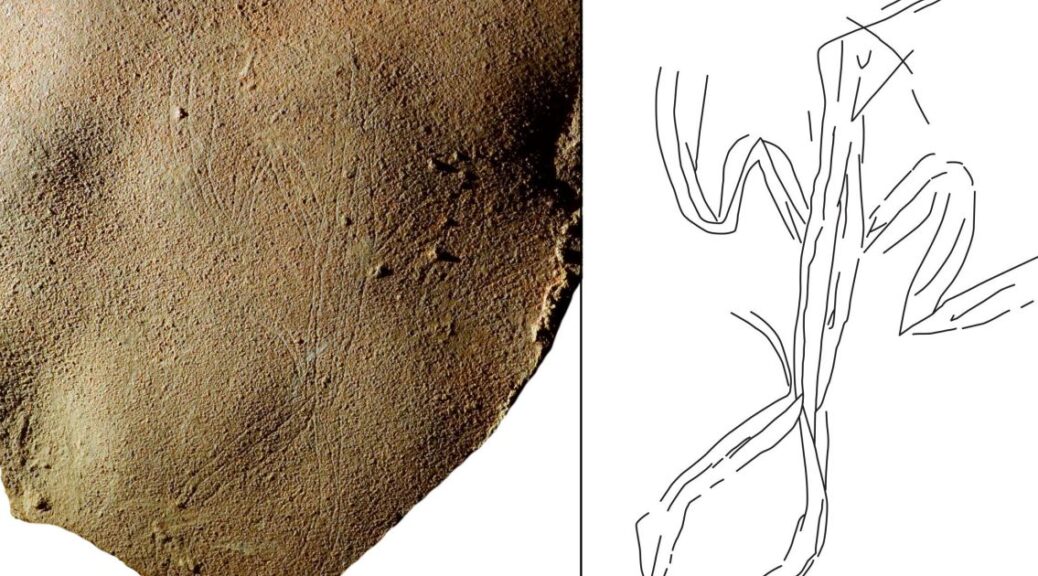Human Figure Detected on 14,000-year-old Burial Slab in Israel
HAIFA, ISRAEL—According to researchers Danny Rosenberg, György Lengyel, Dani Nadel, and Rivka Chasan of the University of Haifa have found an engraving on a Natufian burial slab discovered in northern Israel’s Raqefet Cave.

The researchers suggest the image resembles a dancing shaman, or perhaps a person dressed as an animal, or even a lizard, and that Natufian burial rites may have been more complex than previously thought.
The stone, which was carried up a cliff and into the cave, was found covering the remains of several people who died between 14,000 and 12,000 years ago.
The picture on the slab is an extremely rare example of a recognizable human figure made by Natufians, the researchers say.
According to scholars, Danny Rosenberg, Györgie Lengyel, and Dani Nadel and researchers, Rivka Chasan, in their recent paper in the Oxford Journal of Archaeology, the Natufian culture exists from around 15,000 to about 11,700 years ago and extend from Sinai in south-northern Syria and east into Jordanian desert.
The protracted period of transition from Paleolithic hunter-gatherer society to Neolithic agriculture that started around 15,000 years ago in the Mediterranean region is dubbed the Natufian period.
Small nomadic groups gave way to complex sedentary or semi-sedentary communities that existed on the threshold of an agricultural society.
At some sites, archaeologists tend to agree that the Natufians actually settled year-round in hamlets. As they settled and began to farm (and had dogs), the Natufians established what may be the earliest distinct cemeteries, where communities buried at least some of their dead.
At least some others who were dearly departed were relegated to beneath the floor of the home or laid to rest nearby.

But it seems that when they did bury their dead, Natufian mortuary practices were elaborate.
Their funerals may have featured gathering and feasting, and – going by the newly found crude depiction – dancing.
The figure on the slab could plausibly be a shaman with an exposed penis or be dressed up as an animal, in which case the protuberance could be a tail.
Or maybe it was a lizard. In time, hopefully, more slabs will be found and examination with advanced technology will shed new light on this intriguing phenomenon, the researchers add.
